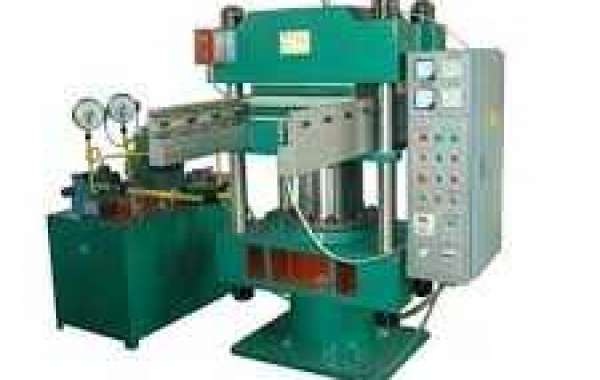Principle of rubber vulcanization
Rubber becomes soft when heated, becomes hard and brittle when cold, is not easy to be formed, is easy to wear, easily soluble in organic solvents such as gasoline, has double bonds in the molecule, easily causes addition reactions, and is easy to age.
In order to improve the performance of rubber products, a series of processing processes are performed on the raw rubber with a rubber vulcanizing machine in production. Under certain conditions, the raw rubber in the rubber and the vulcanizing agent will be chemically reacted to make it from a linear structure The molecular cross-linking becomes a macromolecule with a three-dimensional network structure, so that the rubber compound has high strength, high elasticity, high wear resistance, corrosion resistance and other excellent properties. This process is called rubber vulcanization. The vulcanization process is generally divided into four stages, induction-presulfurization-normal sulfurization-persulfurization. In order to achieve this reaction, energy must be added to reach a certain vulcanization temperature, and then the rubber is kept at the vulcanization temperature range to complete the entire vulcanization reaction.
The origin of rubber vulcanization
Vulcanization is the basic process for rubber compounds to form a three-dimensional network structure through the cross-linking of raw rubber molecules. Different curing systems are suitable for different raw rubbers. Rubber (raw rubber) as the main body, a composite body made of various auxiliary materials, (several major systems of auxiliary materials, filling and reinforcement, vulcanization, protection, plasticization, special substance additives, etc.), and vulcanization is coating The next treatment method of the insulation layer or the sheath layer is to make the vulcanization system in the auxiliary system work to make the rubber permanently crosslinked, increase elasticity, and reduce plasticity. The term vulcanization is because the earliest time is used
Sulfur vulcanizes rubber, so it is still used today.
Rubber vulcanization system
Unsaturated rubber usually uses the following types of vulcanization systems:
Sulfur, organic disulfides and polysulfides, thiazoles, diphenylguanidines, zinc oxide and stearic acid are the main curing agents. This is the most versatile cure system. However, the heat-resistant oxygen aging performance of the vulcanizate obtained is not high.
Alkyl phenolic resin.
Polyhalides (such as hexachloroethane for polybutadiene rubber, styrene-butadiene rubber and nitrile rubber), hexachloro-p-xylene. Bifunctional reagents [such as quinones, diamines, azo and phenylazo derivatives (for butyl rubber and ethylene-propylene rubber), etc.]. Bismaleimide, diacrylate. Divalent metal acrylate (methacrylate), pre-polyether acrylate. Organic peroxide for vulcanized saturated rubber. When saturated rubber is vulcanized, different vulcanization systems can be used. When curing EPDM rubber, organic peroxides and unsaturated cross-linking agents such as triallyl isocyanurate (TAIC) are used. Organic peroxides can also be used when curing silicone rubber. The curing of vinyl silicone rubber can be carried out under the participation of a catalyst (Pt).



